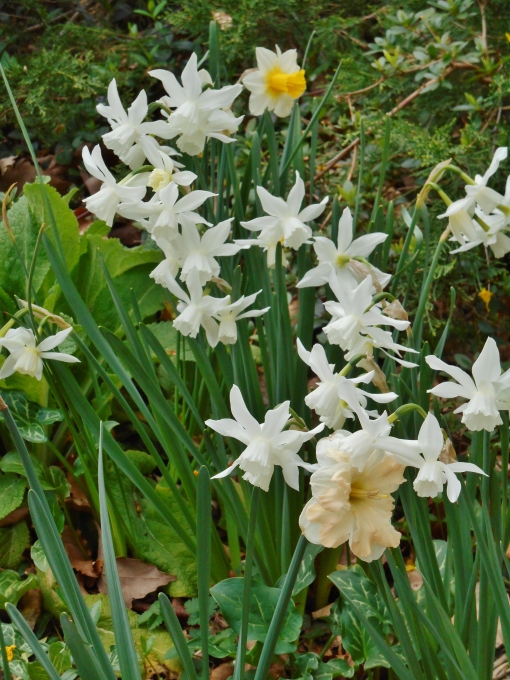
~
‘Cult flowers’ appeal to us so persistently that we respond to them in ways that don’t quite make sense. Their grip on our imagination, our affections, and yes, our resources defy reason.
~

~
Is it possible to fall in love with a genus of plant? Absolutely.
Across horticultural history you’ll find characters who left home continents behind to collect them. You’ll find those who quit their day jobs to breed and raise them full-time. And, sadly, you’ll find those who ignored their spouse’s better judgement to collect them…. year after beautiful golden year.
~
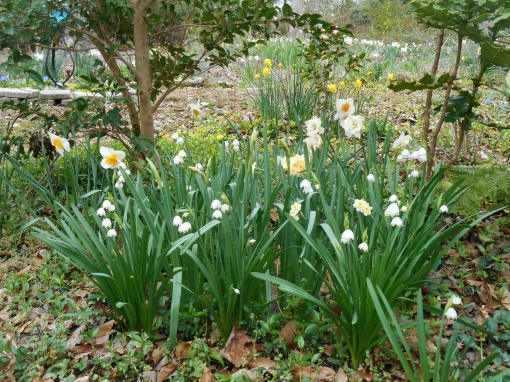 ~
~
To gain a deeper understanding of the many ways in which daffodils have been ‘cult flowers’ for the last few centuries, treat yourself to Noel Kingsbury’s beautiful and very useful book Daffodil: The Remarkable Story of the World’s Most Popular Spring Flower.
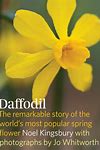
Kingsbury, a beloved British landscape designer and horticulturalist, takes us on a journey of all things daffodil that actually begins in pharonic Egypt. Yes, the Egyptian royals were talented gardeners, collecting many of the same plants that we do today: Narcissus, Iris, lilies, Alliums, and many sorts of fruit bearing trees. Kingsbury tells us that Ramses II’s mummy was found with a Narcissus bulb covering each eye. Now that goes a bit beyond what even we moderns do to enjoy our spring daffodils!
~
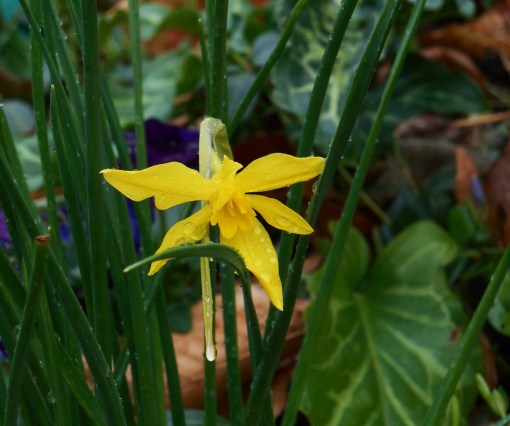
~
Because Narcissi return so reliably as winter transforms into spring, they’ve earned a mythic association with time and eternal life. They’re often planted around cemeteries in areas where they perennialize, where they return year after year in ever greater numbers.
Extremely poisonous, Narcissi have a narcotic quality when used medicinally. They were used, in measured, carefully prepared potions, to sedate and treat pain. Never mistake a Narcissus bulb for an onion; this has been done from time to time with disastrous results.
~
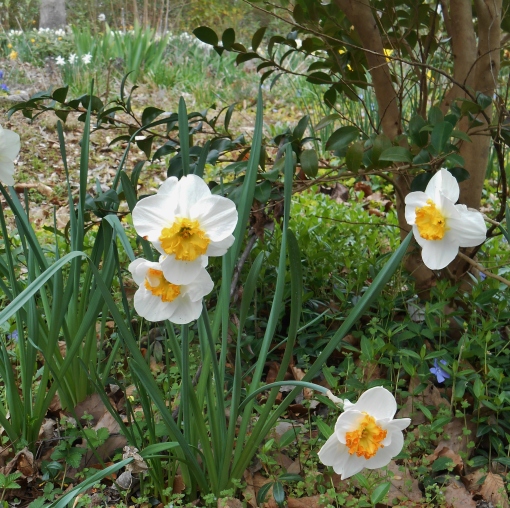 ~
~
I appreciate the poisonous qualities of daffodils and plant them with confidence where deer shred non-lethal flowers and shrubs. And I plant a ring of daffodil bulbs around newly planted shrubs and trees, to protect their roots from voles. In fact, we’ve learned to stop vole traffic to parts of our garden by planting rows of daffodils across their former paths. Unlike chemicals that must be reapplied every few weeks, the daffodil solution proves permanent, growing denser and more effective with each passing year.
~
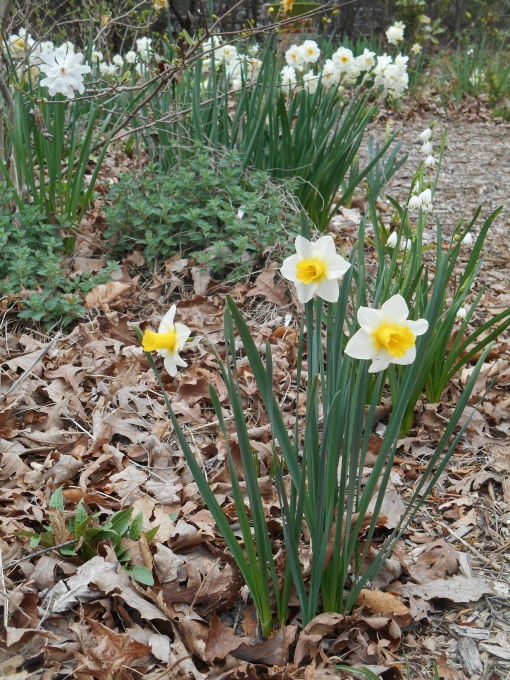
~
Kingsbury gave me a good, basic understanding of the various species daffodils known and loved since at least the dark ages. He quotes medieval manuscripts which describe the daffodils growing in certain royal or monastic gardens, often with small paintings to illustrate the flowers. He then builds on that knowledge of the species, their characteristics and countries of origin to help explain the work of modern day daffodil breeders.
~
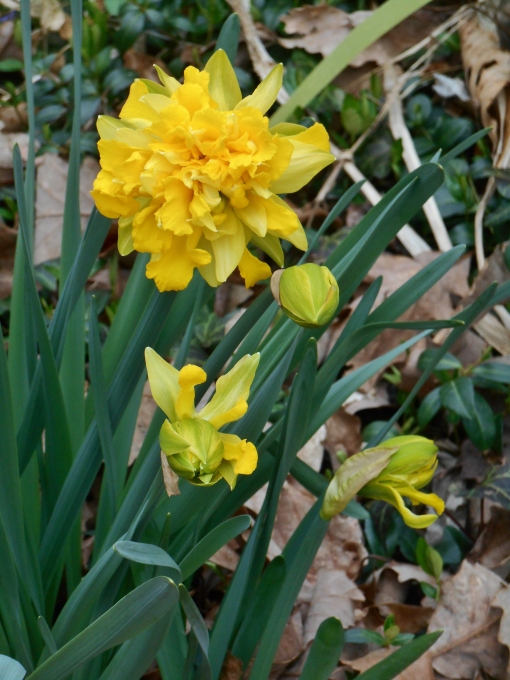
~
There were already nearly 80 distinct types of daffodils recorded in British horticultural records by 1607, when British colonization began here in Virginia. And yes, those early settlers brought their daffodil bubs with them, sometimes sewn into the clothing they wore on the voyage.
Daffodils were planted early on all over coastal Virginia, and they thrived here. As European/American settlers moved ever further west, they took their daffodils with them. So much so, that Kingsbury describes how Native Americans carried daffodil bulbs with them along the Trail of Tears.
~
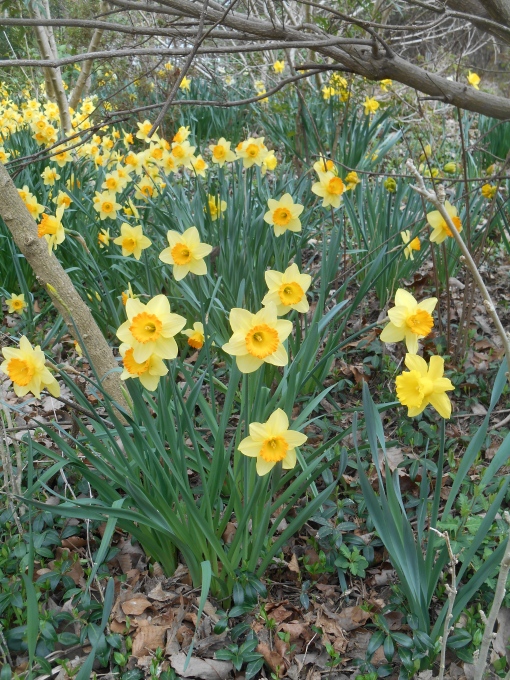
~
By the early 19th Century, there were 150 distinct types of daffodils cultivated in England. A Yorkshire vicar dissected all 150 varieties to develop a classification system and discovered that many of the flowers were sterile. This was in the early days of enthusiasts and scientists understanding the principles of hybridization, and at this time all of the known daffodils were species or natural hybrids.
~
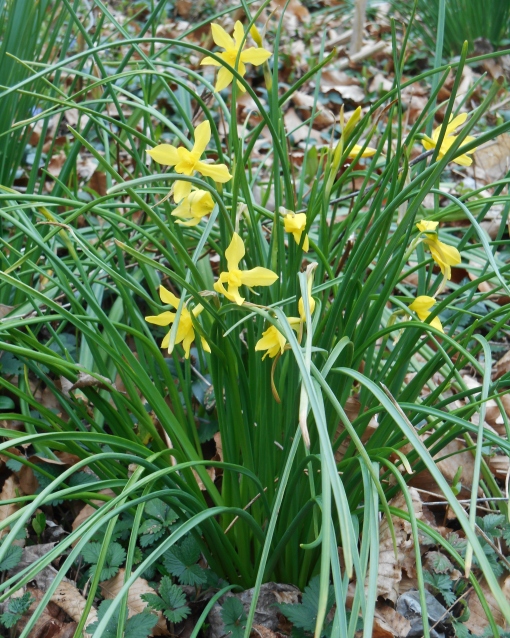
~
Daffodils had perennialized across Virginia’s Gloucester Peninsula when Brent Heath’s grandfather, Charles, visited in search of the farmer who grew a terrific cantaloupe. It seems his grandfather wanted to arrange personal deliveries of the especially tasty melon. He found the farmer, and he also found fields of daffodils, ripe for the picking. Residents in those days picked the wild daffodils to sell as cut flowers in cities up and down the coast. As late as the 1980s, daffodils were sold on street corners in Richmond by vendors who purchased daffodils from Gloucester, as soon as they bloomed each spring.
Charles Heath ended up buying the family’s current properties in Gloucester where Brent and Becky’s Bulbs still does business today, and went into the cut flower business.
~
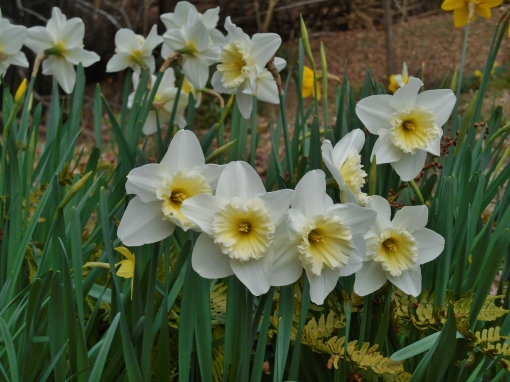
~
That is how the Heath family first entered the wonderful world of growing daffodils. Charles Heath had connections in Europe, and soon introduced many new European varieties of daffodils to his Gloucester fields, where the flowers were picked, bundled, shipped and sold each spring to ports along our East Coast. His son, George, continued in the business and had one of the largest collections of Narcissi varieties in North America when his son, Brent was born.
Brent tells stories of how he was instructed at a very early age in how to properly pick and bundle daffodils for sale, and he earned his pocket money by picking daffodils each spring; and later by raising bulbs from small divisions on the family farm, and selling his bulbs.
~
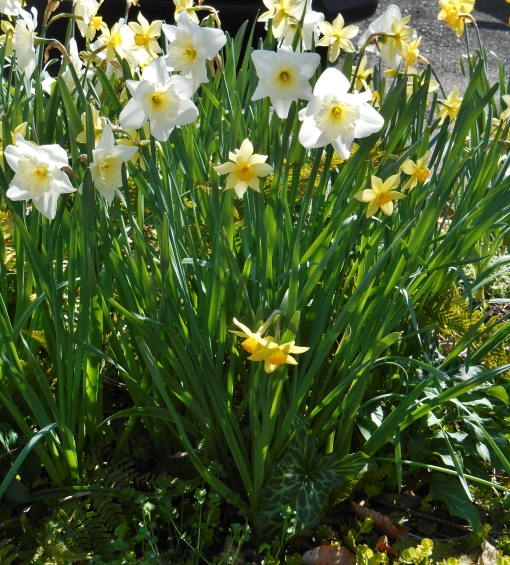
~
Eventually, Brent Heath decided that he wanted to also develop new hybrids. He was mentored by skilled breeders, and had the knowledge, patience, and attention to detail to develop and bring to market many beautiful new hybrids. The Heaths are known and respected internationally for their tremendous selection of daffodil and other bulbs, and for the health and vigor of the bulbs they sell.
~
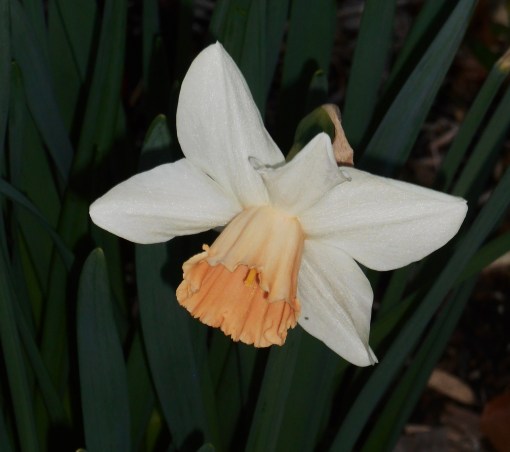
Narcissus ‘Katie Heath’ named for Brent Heath’s mother.
~
Some might wonder why certain people passionately devote their lives to breeding new varieties of a single type of plant. Once there are already many thousands of named and recognized varieties, why would the world want more?
Consider that it may take a Narcissus seedling up to five years to flower, and once selected, it may take another 10 to build up a large enough stock of bulbs to market commercially.
~
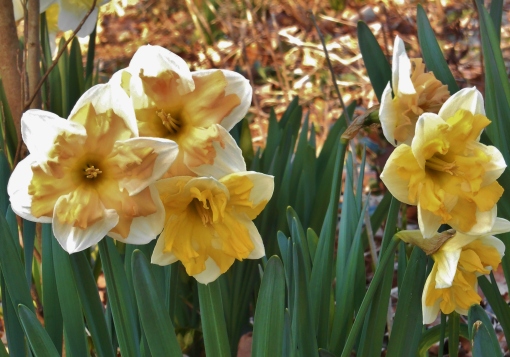
Mary Gay Lirette, a Heath hybrid.
~
Only someone passionately devoted to their art would persist so long in the pursuit of offering a new variety of daffodil to the world. But there are many breeders willing to make the commitment, and who have the resources to generate new hybrids.
On the one hand, there is a desire to perfect the plant, generating stronger stems, more disease resistance, hardiness, and a willingness to grow well and perennialize under a wide variety of growing conditions. On the other hand, there is the desire to produce certain combinations of form and color.
~
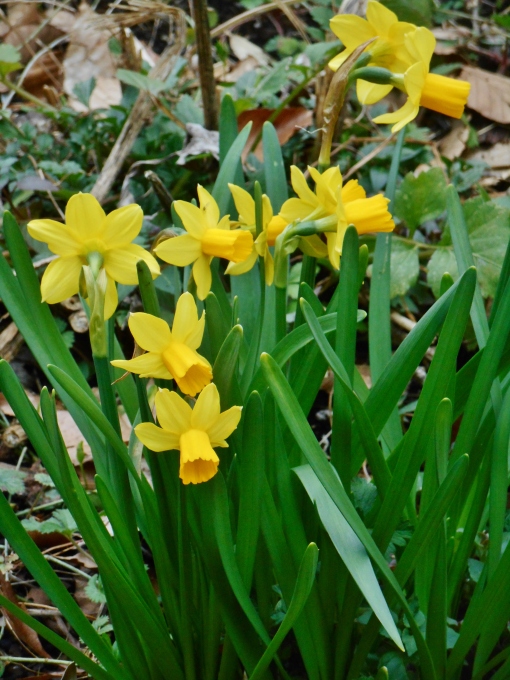
~
Miniature daffodils appeal to many hobbyists with limited growing space, and many breeders are working now to develop ever more combinations of flower form and color on a miniature plant.
Kingsbury opens his chapter on daffodil breeders with a photo of a delicate white miniature daffodil, with a tiny green cup and recurved petals, which stole my heart. I skimmed ahead for its name so I might order it.
~

~
Sadly, it was an ‘unnamed seedling’ produced by California breeder Harold Koopowitz, and not yet on the market when Daffodil was published in 2013. The ability to create such variety within the relatively limited scope of the Narcissi characteristics defines both the breeders’ passion and the collector’s lust for new plants.
~

~
Most of us think about the classic yellow trumpet daffodil as our ideal. It is sunshiny yellow, has six nearly identical petals surrounding a long, wide trumpet, or corona, of the same color. It stand about 16″ tall on a soft hollow green stem, and has narrow green leaves surrounding it.
~
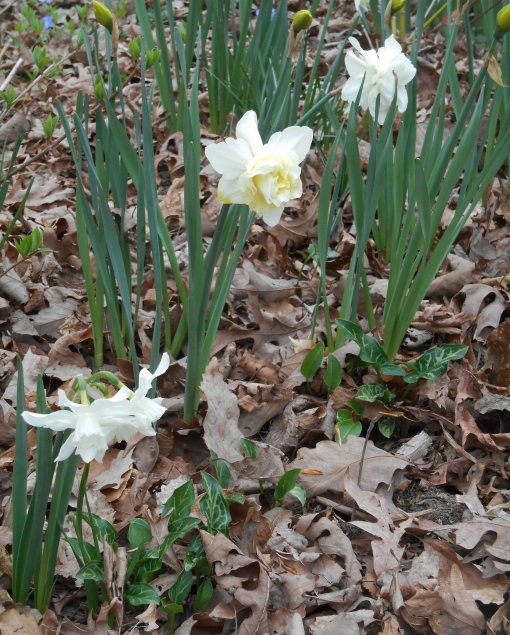
Pure white N. ‘Thalia,’ two flowers per stem, blooms beside double N. ‘Cheerfullness’
~
Now, imagine this same flower in white, and you have N. ‘Mount Hood.’ Daffodils may have white, yellow, yellow-green, golden, peach, or pink petals. The corona may be long or very short, wide or narrow, frilly, doubled, or split into sections, and splayed back against the petals. It may appear in white, green, orange, gold, red, peach, yellow or pink. Some doubles look like Camellias, their coronas are so full.
~
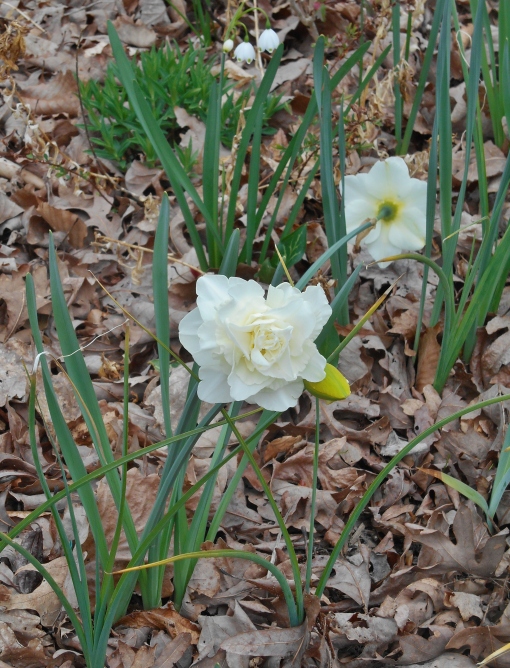
N. ‘Obdam, a sport of N. ‘Ice Follies’
~
The petals themselves may be wide or narrow, rounded or pointed, twisted, long or very, very short. Flowers may be scented or not, one to a stem or many, and the stems themselves may be anywhere from 4″ to 24″ tall.
Finding the variations and interesting new combinations makes the work endlessly fascinating.
~
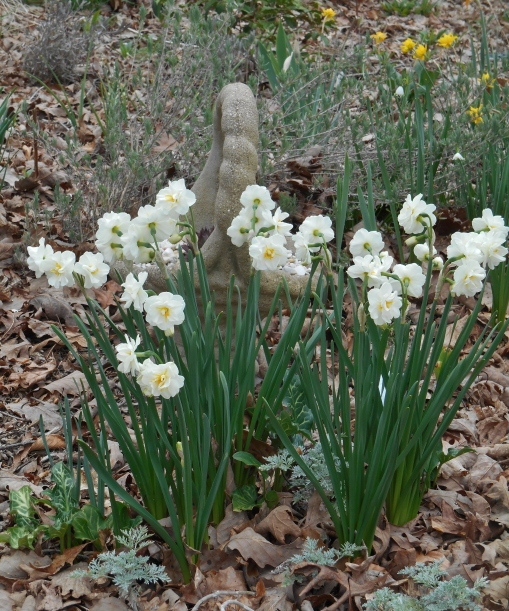
N. ‘Erlicheer’, 1934
~
Daffodils bloom over a long season here in coastal Virginia, some as early as late December and some as late as May. They arise from the wintery earth to grow and bloom when little else is in season, and then once the leaves have re-fueled the bulbs for another year, they die back and disappear. If naturalized in grass, the grass can be mown again a little more than a month after the flowers finish.
~

~
Many of us enjoy growing daffodils around shrubs and under trees. They make their spectacular spring show, and then are gone as the trees begin to fill in the canopy of their summer leaves. We don’t have them around for long enough to grow tired of them. In our garden, by mid-spring, a new variety or two opens each week. As the first ones fade, the late daffodils are just blooming.
~
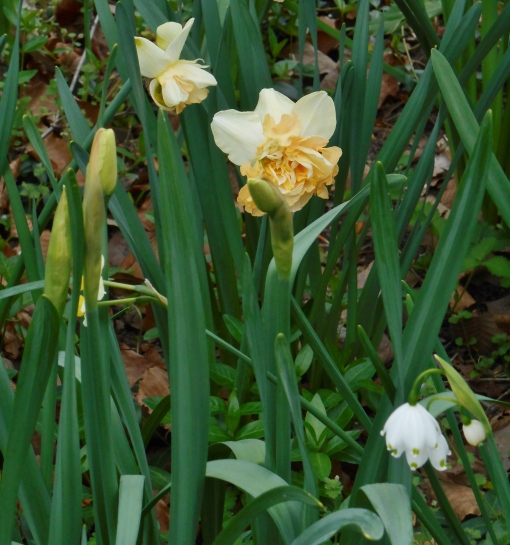
N. ‘Delnashaugh’
~
I’ve ordered lots of 250 or 300 bulbs of the same daffodil variety from the Heaths each summer for the last several years. Gardening friends and I divide up the order, each of us growing some number of the same variety in our own yards. This is a great way to purchase enough bulbs to make a good patch of a variety, without breaking the budget. Generally, the larger the quantity you can order, the better the price per bulb.
~
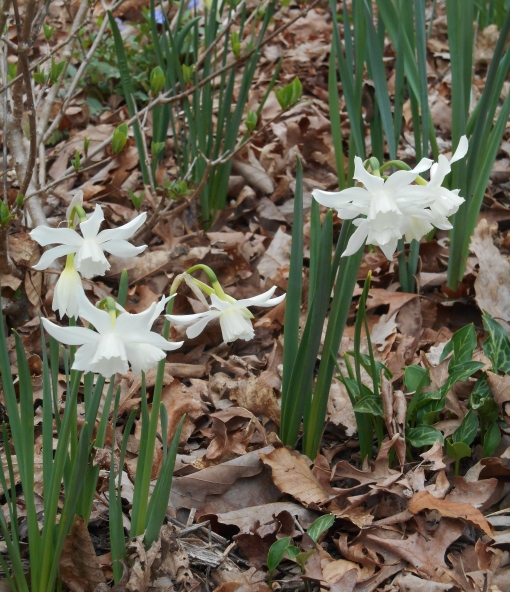
~
This year, I’m undecided which variety to order. I’ve asked some friends for their opinions on my short list of ten varieties, heavily weighted towards the Heath’s own introductions. I happen to like the more unusual flower forms, like the doubles and split coronas.
~
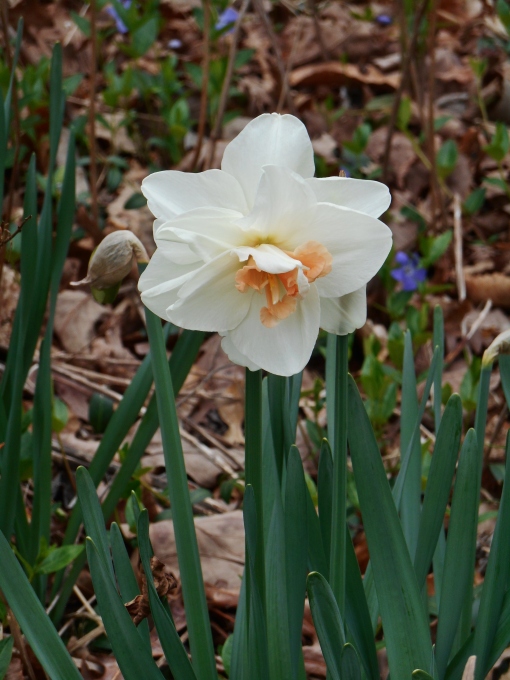
N. ‘Madison’
~
I also like those with white petals and color in their corona. I believe we are leaning towards a beauty called N. ‘Gentle Giant,’ which has white petals and a frilly, bright orange cup. Whichever one we choose, we will be happy growing it.
~
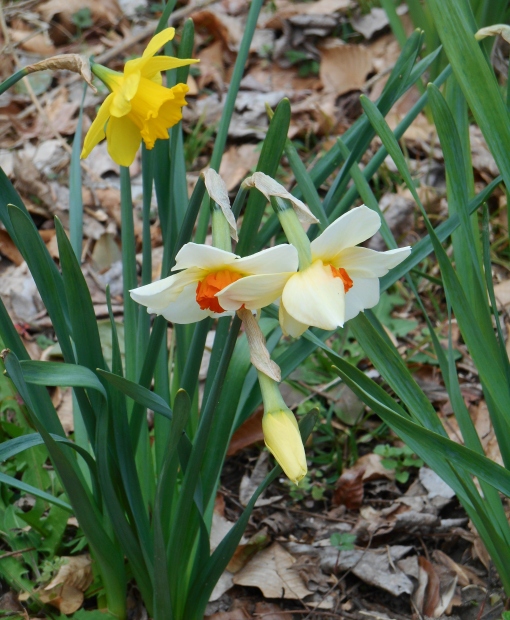
~
Daffodils are happiness inducing flowers, greeting us each spring with cheerful faces and easy demeanor.
No wonder they have remained ‘cult flowers’ over many centuries of human history, growing perhaps more popular with each passing year. A gardener knows that the bulbs planted this fall will bloom again and again, long past the time when another gardener has taken over the work.
~
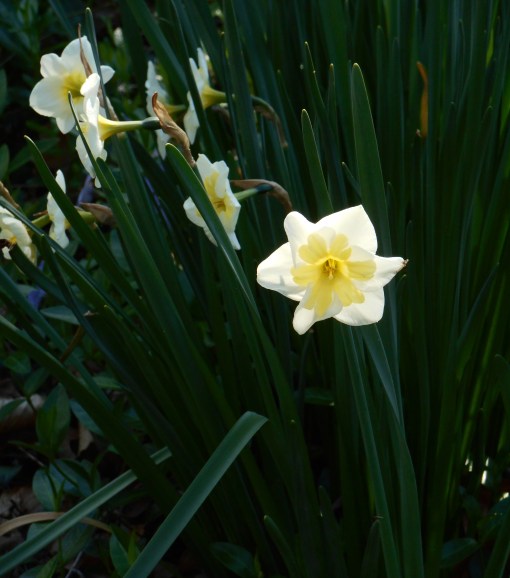
~
Woodland Gnome 2019
~
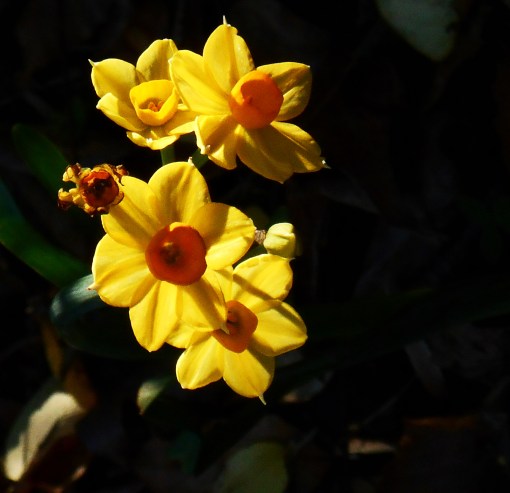
Pingback: Monday Morning Blooms – 13,000 Daffodils, oh my! – priorhouse blog
Oh my! My two favorite genera are totally opposite. The second is Yucca! For a while, I grew all but one of the 49 species of Yucca (not counting cultivars). The first is Acer, but just the North American species. I really dislike the trendy Japanese maples because they are too popular in the Santa Clara Valley, where they do not do very well.
Great, informative post. It is amazing to think that it can take 15 years for a new hybrid to come to market. And King Ramses had narcissi on his eyes – pest control you think or did he simply love the flower? 😉
Or was he simply a ‘narcissist’ ? Thank you , Eliza. I’m glad you enjoyed the post. Kingsbury is becoming one of my favorite authors 😊
Fascinating blog post!! I loved hearing about the history of daffodils and seeing all your lovely pictures.
Thank you so much ❤ How are your Hellebores coming along?